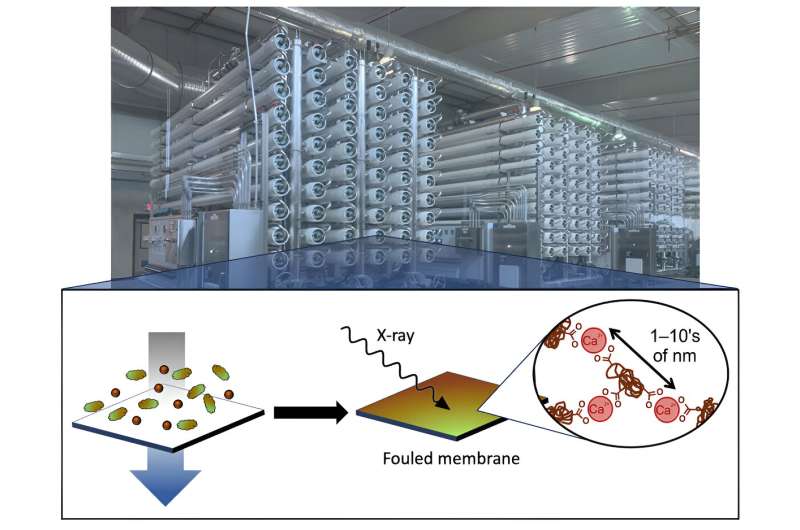This article has been reviewed according to Science X's editorial process and policies. Editors have highlighted the following attributes while ensuring the content's credibility:
fact-checked
trusted source
proofread
Keeping water-treatment membranes from fouling out

When you use a membrane for water treatment, junk builds up on the membrane surface—a process called fouling—which makes the treatment less efficient. In a new study, published in the Journal of Membrane Science, researchers studied how membranes are fouled by interactions between natural organic matter and positively charged ions (such as calcium cations) that are commonly found in water from dissolved minerals and salts.
"Fouling has been studied since membranes emerged for use in water purification decades ago, but it still remains one of the largest challenges in water treatment," said the study's first author, Matthew Landsman, an ALS collaborative postdoctoral fellow from the University of Texas at Austin's Center for Materials for Water and Energy Systems (M-WET), a DOE Energy Frontier Research Center (EFRC). "Our research aimed to understand the molecular-level mechanisms that influence membrane fouling by natural organic matter so that we can establish design rules for making better membranes."
After running laboratory fouling experiments on membranes at UT Austin, the team used synchrotron characterization techniques at the Advanced Light Source (ALS) and Brookhaven's National Synchrotron Light Source II (NSLS-II) to analyze the surface and bulk compositions of the fouled membranes. At ALS Beamline 7.3.3, wide angle X-ray scattering (WAXS) was used to see if any inorganic contaminants, such as calcium carbonate, were precipitating on the membranes. At NSLS-II, soft and tender X-ray scattering experiments determined the distribution of calcium in the fouling layers.
In one of the mechanisms studied, calcium cations formed bridges between organic molecules and caused them to aggregate, creating a thick fouling layer that limited the amount of clean water that could pass through the membrane. In "synergistic" fouling experiments, mixtures of organic and inorganic foulants resulted in less fouling than would have been expected by just summing up their individual effects, suggesting that interactions between contaminants in complex foulant mixtures can not only contribute to more fouling, but they can also compete with each other to induce less fouling overall.
"There's a lot of interesting water chemistry to play with here," said Landsman. "These results helped us start to develop an intuition for how we approach the treatment of complex water sources that are becoming more important to today's growing water needs."
More information: Matthew R. Landsman et al, Linking water quality, fouling layer composition, and performance of reverse osmosis membranes, Journal of Membrane Science (2023). DOI: 10.1016/j.memsci.2023.121717
Provided by Brookhaven National Laboratory





















